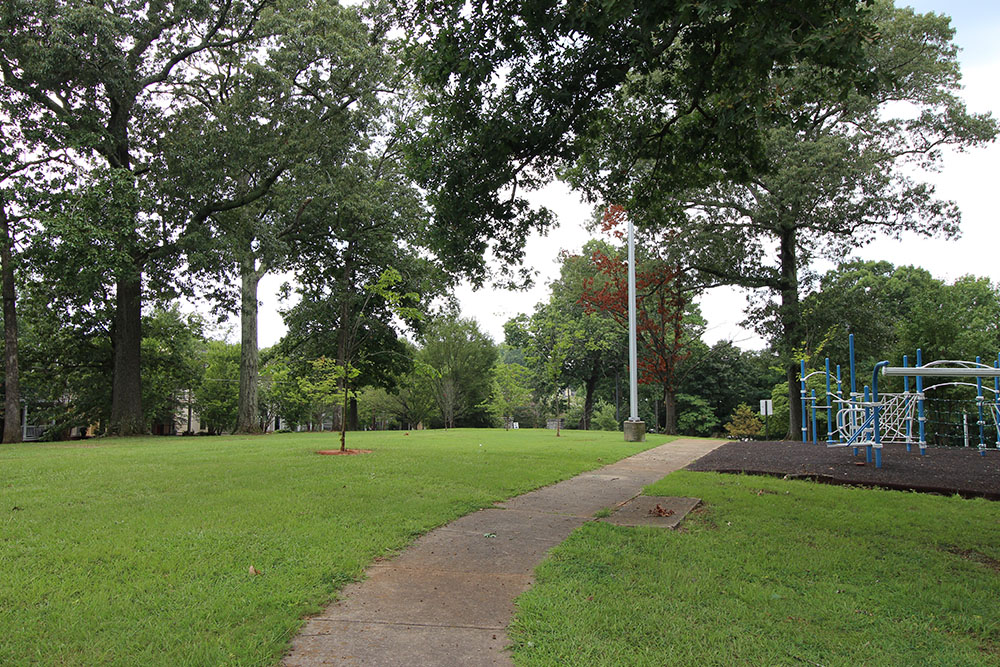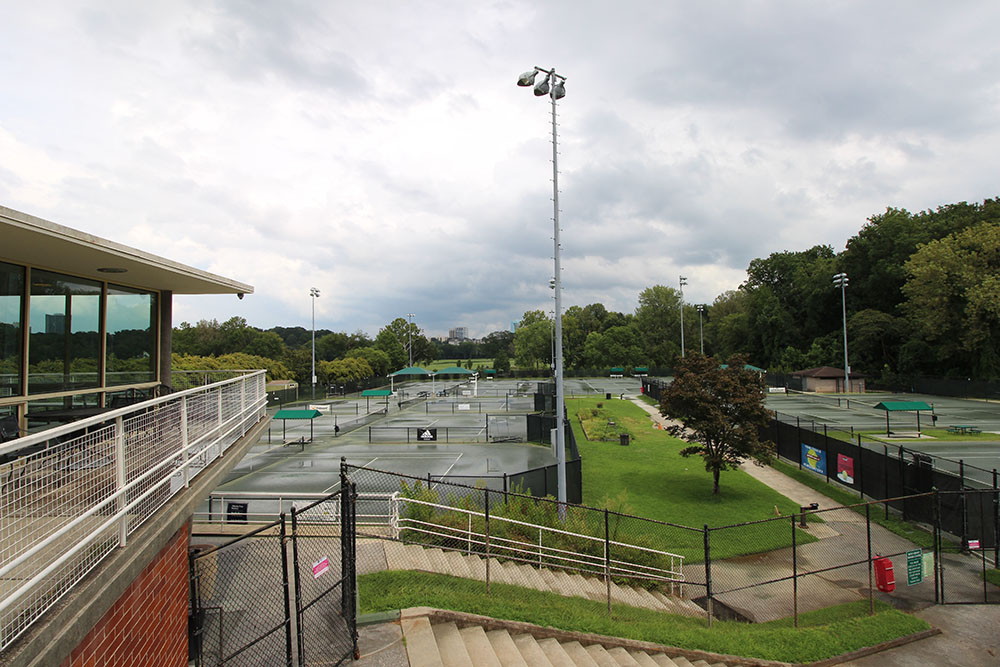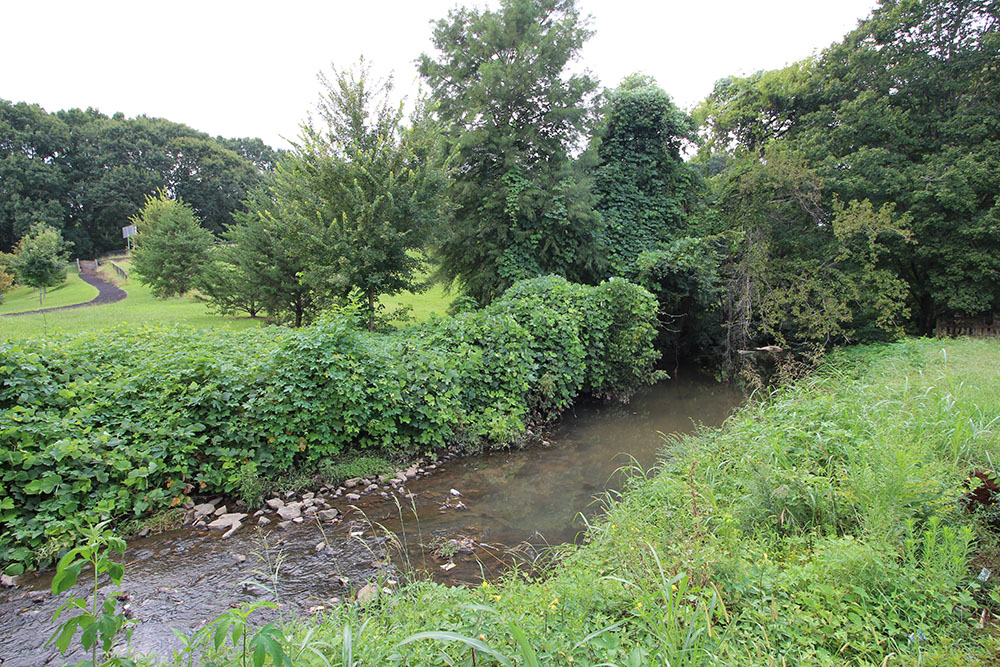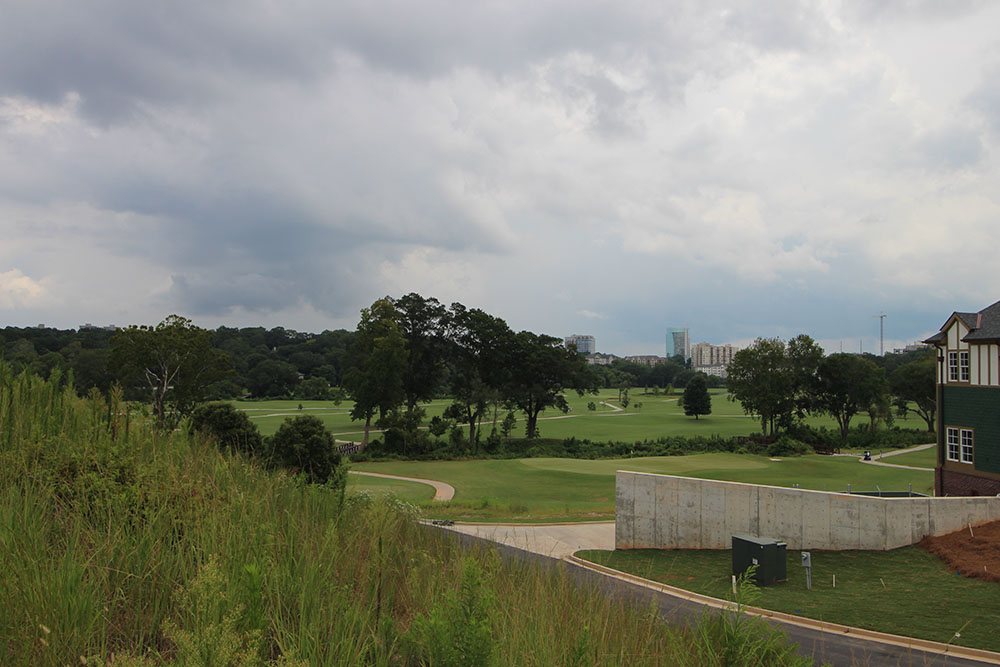Letter From: Atlanta
Text by Clara Kwon
Who Belongs in Landscape Architecture?
BIO/ Clara Kwon, OALA, founded Stand Landscape Architecture LLC and recently served as Director of Parks Design for the City of Atlanta’s Department of Parks and Recreation. She is an OALA Full Member – Inactive, a licensed PLA in the State of Georgia, and a SITES Accredited Professional.
In 2015, I moved to the Black mecca of Atlanta from the multicultural mecca of Toronto. From one mecca to another, I have seen how the myths of diversity and inclusion can mask racial exclusion. Through my professional experiences, I have become more attuned to how racial power and privilege show up in landscape architecture. Here in the home of the civil rights movement, I have turned to the work of Black activists, intellectuals, and design professionals to understand how white dominance affects Black lives in public spaces. This city has shown me the possibilities and challenges in counteracting these effects, fighting back, and building political and cultural power.
Despite being part of a large demographic of Asians (East, South, Southeast, and West) in Toronto, my Korean immigrant parents wanted me to assimilate into white Canadian culture for my success and survival. In Atlanta, I am now part of a four per cent minority group. Being part of neither dominant group of Black or white, I contend with a feeling of “not-being.” In this perceived void, my individuality is often lost to stereotypes where I am sometimes privileged, sometimes docile, sometimes a threat. These experiences, ranging from comic to near-violent, have given me a window into the worlds of both the Black and white experience, deeper insight into my own, and the racialized power dynamics at play.

Belonging and safety in public space look and mean different things depending on who you ask. In North America, landscape architecture’s heritage is European and people of European descent form a large majority of practitioners. This dominant group usually feels they belong everywhere and they design as if theirs is the only reality. This results in inequitable outcomes in the workplace, in our institutions, and in our designs for individuals and communities that are not white.
To my fellow landscape architects who may be unpacking Canada’s myth of multiculturalism, I share a few stories from “The City Too Busy To Hate” that illustrate how anti-Black racism and white dominance is embedded in our profession. I hope my experiences translate into lessons for anti-racist design practice in Ontario.
Cede Dollars and Decision-Making Now
If racism isn’t part of your lived experience, it takes extraordinary effort, mindfulness, and time to empathize with a reality that is not your own and sit with a truth that is damning and uncomfortable. Diversity training, reading a few books, tuning into a few webinars can start to open minds and scratch the surface. One white parks advocacy leader who had completed a diversity training liked to educate me on equity while failing to examine his own organization’s policies. Two years ago, I mapped how this non-profit organization’s grant-matching policies were favouring white, wealthy communities, year after year, and proposed changes to the philanthropic criteria to correct this inequitable imbalance. After we had this uncomfortable conversation, I was no longer invited to their meetings.
I followed up with this non-profit this year, asking what transformative action would be taken to create a team reflective of Atlanta’s demographics and to embed equity into their policies. I learned this organization’s major donors had been reluctant to support radical policy changes until this year’s overwhelming eruption and support of the Black Lives Matter movement. Now, they are eliminating the matching grant requirement for a small portion of the grant applications.
This gatekeeping of wealth and priorities by predominately white environmental organizations impedes equitable distribution of resources. It leaves Black, Indigenous and People Of Colour (BIPOC) communities at the charitable whims of white leadership, staffing, and board members. In the environmental non-profit world, power and funding need to shift directly to BIPOC grassroots organizations in the community who know best how to serve it. A more equitable kind of green development will ensue.

Challenging Yesterday’s Dominant Narratives
In my last trip to Seoul, South Korea, I noticed many small urban gardens in both contemporary and historic settings around Seoul. They were naturalistically planted with Asian native ornamental grasses. I had always assumed Piet Oudolf created this style. I started to wonder how our profession’s Eurocentric heritage in North America steers us away from a design heritage that is not only indigenous to this land, but also from Asia and Africa. Unchallenged, Eurocentrism slips by as normative and neutral in our multicultural world.
In Atlanta, landscape architecture is a predominately white profession. The Georgia American Society of Landscape Architects chapter celebrates Frederick Law Olmsted’s birthday in veneration of the greatness of his parks. These parks were enjoyed solely by white Atlantans up until less than sixty years ago.
During my time in local government, my Black colleagues, none of whom were landscape architects, introduced me to the history of Washington Park, Atlanta’s first planned Black neighbourhood—built by Black business magnate Heman Perry a hundred years ago. This neighbourhood had Atlanta’s first public park open to Black citizens, with tennis courts, a swimming pool, and dance hall. In another neighbourhood, an amusement park called Joyland was also built for the Black community in 1921. In 1955, Black golf champion Alfred “Tup” Holmes fought and won in the US Supreme Court to desegregate public golf courses so that he could play at Bobby Jones Golf Course. Next to this golf course is Bitsy Grant Tennis Center, where Black civil rights leaders were barred from playing tennis in 1961. They fought to desegregate all of Atlanta’s public parks and recreation facilities. Many white Atlantans reacted to this enforcement of the law by moving to the suburbs in the mass exodus known as “white flight.” This racist history of exclusion is rarely talked about amongst my white colleagues here in Atlanta. In their silence, they often choose to ignore how this continues in other guises today.

The Values that Will Shape Tomorrow
By this point in 2020, I hope you are familiar with the numerous calls to action put forth by Black and Indigenous designers on how to dismantle racism in our profession. Please listen and support.
The radical change this requires asks us all to centre our work on humane values such as dignity, respect, justice, cooperation, and coexistence. Landscape architects claim to design for the needs of all people, but we mostly focus on environmental concerns that affect white people. We talk about climate change but less about environmental racism and how dominant groups force marginalized groups, whether by economics or law, into neighbourhoods that are severely impacted by climate change. Rarely do we confront the bigger problem of European colonialism and the racialized imbalance of power and resources it has created around the world, of which our designed landscapes are both symptom and setting.
In Atlanta, the Department of Watershed Management (DWM) is leveraging its enterprise fund and its scale as a government authority to correct some of the racialized power imbalances that result from inequitable landscape development. DWM issued its first ever Environmental Impact Bond (EIB) last year to finance green infrastructure projects and the workforce needed to build and maintain these projects. While the bond repayment is tied to the volume of stormwater captured through green infrastructure, DWM has also committed to meeting socioeconomic goals that have been defined by community stakeholders and a Water Equity Task Force. Through an equity lens, this group focused on severe flooding and contamination that have historically plagued Black neighbourhoods, due to poor infrastructure and industrial siting. The desired outcomes included authentic community engagement and workforce development opportunities in the green infrastructure industry to mitigate the gentrifying effect of capital investment in Black communities. Local Black environmental leaders and DWM planners and engineers have been working together for nearly a decade to understand each others’ perspectives and expertise and build trust and cooperation. The EIB points to a new way of creating systems and structures that value the socio-economic health of communities, as well as their environmental health. The engagement process and project outcomes centre humane values in a design domain that has often ignored the racialized consequences of its choices.

For a profession at the crux of multiple disciplines, and operating at the landscape scale, it is our obligation to create systemic, societal change, not at the pace that suits white comfort, but at a pace and on the terms of Black and Indigenous communities that have been harmed by silence, inaction, violence, and exclusion for hundreds of years.
If we feel a sense of urgency about climate change, we need to feel a sense of urgency about racism. Environmental degradation, racial exclusion, and erasure are interconnected. Understanding white dominance in landscape architecture, its history, biases and blind spots, is key to rebalancing power and perspectives in public realm design so that BIPOC designers can freely lead in the creation of our landscapes. To truly serve a multicultural and equitable society, we must continue working to expand our concept of belonging.
